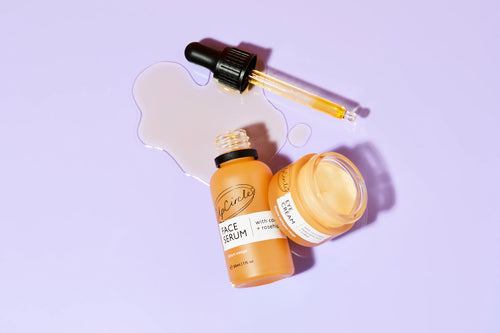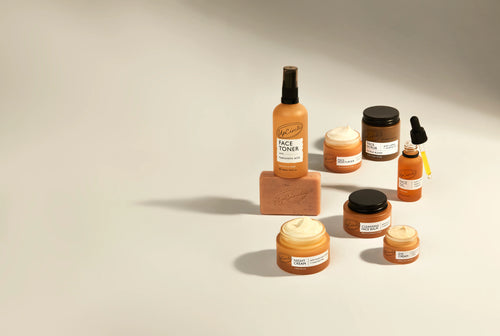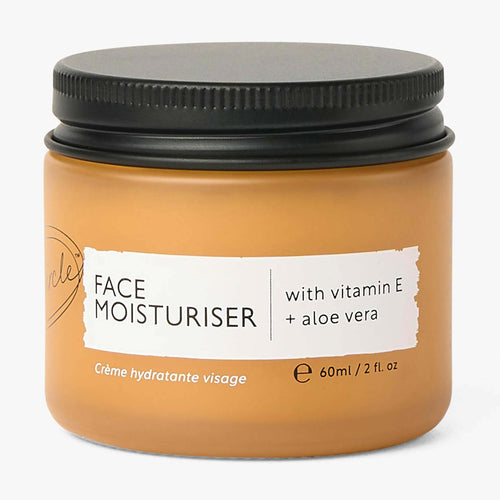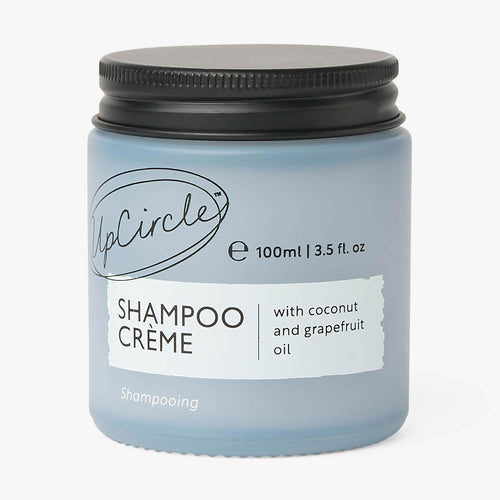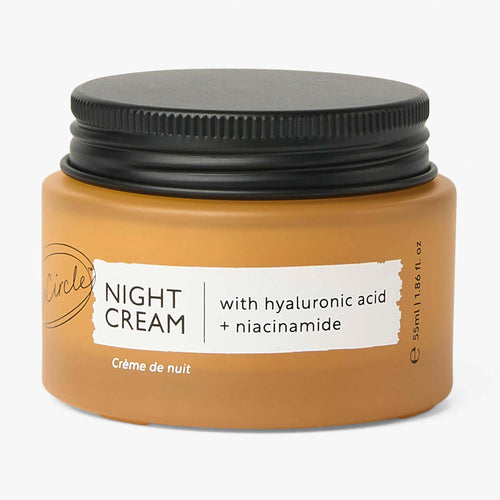Here at UpCircle, we don’t believe in ‘good’ or ‘bad’ skin – all skin is wonderful, as it does a very important job. You don’t have to 'fix' any skin condition you may be experiencing, but we know it can be helpful to better understand what may be causing your facial skin condition and how you can relieve symptoms.
We do know that for some people, troublesome skin conditions can be upsetting, frustrating and often uncomfortable. They range in severity and may come and go. There are a large number of facial skin conditions that can affect us throughout our lives, and many of them have remarkably similar symptoms, making it difficult to establish which type of skin condition is affecting you.
By gaining an understanding of facial skin conditions such as acne, dermatitis and rosacea, you can treat the problematic areas more effectively and reduce the risk of flare-ups. Indeed, with skin conditions, often prevention is better than cure! Even if you don’t suffer from difficult skin right now, understanding your skin and potential conditions can help you take care of it appropriately.
We’ve compiled a list of the most common skin conditions on the face, along with some tips for managing troublesome symptoms.
Acne
An astonishing 95% of children and young adults are affected by acne and may experience symptoms on and off for several years. Despite its prevalence, we don’t underestimate how difficult acne can be to experience and to manage.
Acne is one of the most common types of facial skin conditions, usually beginning in puberty when hormones can trigger excess sebum production and block the skin follicles, causing pimples.
The symptoms of acne vary upon the severity, but whiteheads, blackheads and the formation of tender red bumps are all common. Acne can also appear on the back and shoulders, but it is usually most prevalent on the face. This can cause body confidence issues and also scarring if the inflamed areas are picked or squeezed.
To reduce breakouts, choose beauty products designed for acne-prone skin and cleansers rich in Vitamin E – a powerful anti-inflammatory that aids cell regeneration to combat acne. We strongly recommend natural products which are known to help soothe affected areas and reduce symptoms as well as help to prevent future outbreaks.
Dermatitis
Dermatitis is an overarching name for any facial skin conditions that cause the complexion to become inflamed. Most dermatitis conditions cause itchiness, dry flaky skin and red rashes. Typical forms of dermatitis include eczema, cradle cap (in infants) and dandruff.
It can be frustrating to have such a broad label, and indeed you should consider whether there is something causing the dermatitis. For example, allergies and intolerances are common causes of dermatitis.
Eczema
Atopic eczema is a type of dermatitis that causes dryness and cracking of the skin. It can cause the complexion to appear red or brown and can be sore and painful, depending on the severity.
Eczema can be caused by triggers such as stress, certain soaps or beauty products, the weather and can also run in the family.
While eczema is a long-term condition and there is currently no cure, sufferers with mild to moderate symptoms will benefit from self-care techniques. These include using natural, fragrance-free skincare products formulated for dry skin and avoiding scratching the affected area.
For severe cases of eczema, a prescription corticosteroid may be needed to control painful swelling and itching during a flare-up.
Keratosis
Keratosis is a skin condition that causes rough, scaly patches of skin to appear on sun-damaged areas of the face.
The patches are small, ranging in colour from pink to brown and feel like sandpaper to the touch. If you’ve developed Keratosis as a result of spending too much time in the sun, the most important thing to do is avoid any further exposure by using SPF every day (even in the winter).
Keratosis is almost always a benign condition that is often associated with mature skin. It can be managed by staying out of the sun and keeping skin well-hydrated with skincare products suited to mature skin. However, the flaky patches can look very similar in appearance to melanoma, so if you have any concerns about changes to the appearance of your skin, it’s always our recommendation to seek medical advice.
Psoriasis
Facial psoriasis is different to psoriasis of other parts of the body, as the skin on the face is more delicate and thinner, which makes the symptoms more severe. It usually appears around the hairline and on the eyebrows and forehead. It can be a difficult condition to manage and can be distressing to experience.
About 90% of those living with psoriasis have a type known as psoriasis vulgaris, causing skin patches that look like thick silver and white scales. The patches (known as ‘plaques’) cause redness, itchiness and in severe cases can crack and bleed.
The condition may appear similar to eczema, but psoriasis patches are thicker and crustier. Using dermatological natural skincare products that soothe irritated and sensitive skin and replenish moisture is the best way to relieve mild to moderate symptoms.
Rosacea
Rosacea causes redness across the face that may be accompanied by a stinging sensation, dry skin, broken blood vessels and small red bumps.
It can make the person living with rosacea appear as if they are permanently blushing, and while the causes are not fully known, it’s thought to be triggered by sunlight, stress or certain food and drinks.
While rosacea is a long-term condition, the red flushes do not cause any permanent scarring and the symptoms can be managed by avoiding any known triggers and using soothing skincare products designed for sensitive or inflamed skin with a neutral PH. It’s worthwhile for rosacea sufferers to take some time working out their own personal triggers.
Choose natural skincare for sensitive skin
If you are living with one of these common skin conditions, it’s good to remember that you are not alone – and that there are plenty of skincare products out there that can help to relieve the symptoms of many facial skin conditions.
Start by visiting our natural, vegan skincare shop, and browse our range of gentle cleansers, moisturisers, and serums designed for sensitive skin as part of your daily skincare routine.

